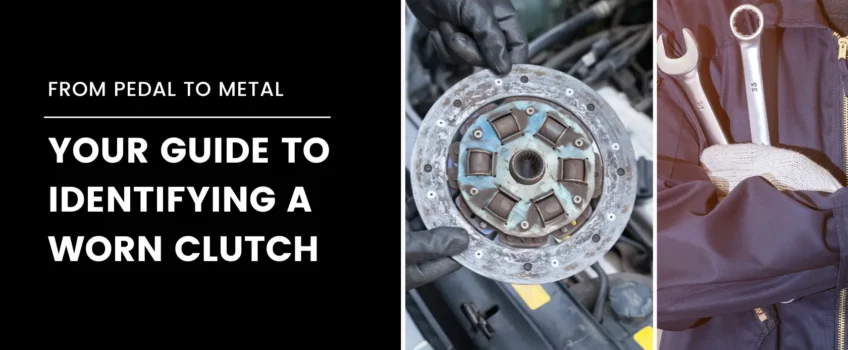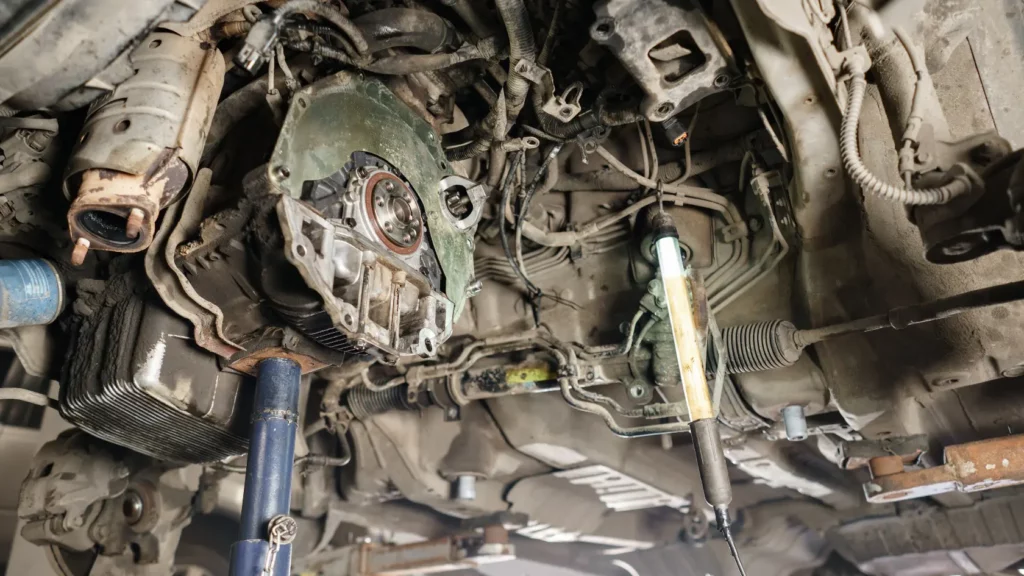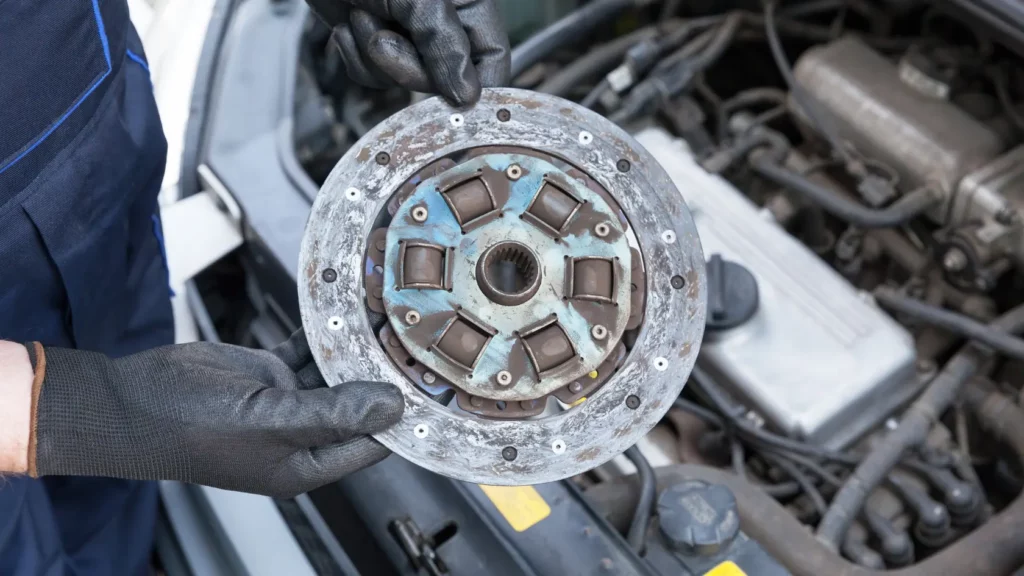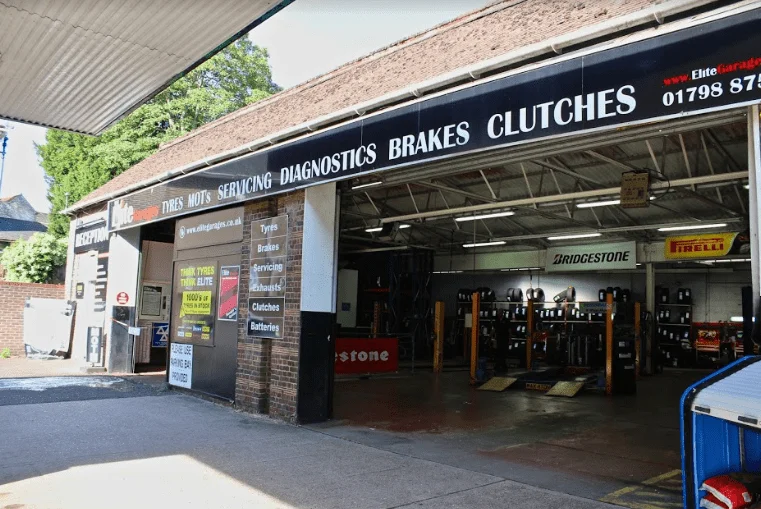
How to Tell Your Clutch Needs Replacing
Listen up, car enthusiasts and petrol heads! Have you ever found yourself in a sticky situation with a potentially worn clutch? Perhaps you’re stuck in traffic and something seems off with your car. Maybe you’ve noticed strange behaviour, unusual sensations under your foot, or strange sound you can’t quite identify. The good news is, Elite Garages is here to help. In this guide, you will learn how your clutch works and discover some of the tell-tale signs that you may have a worn clutch.
A Deep Dive Into Your Car’s Clutch
Before we continue, let’s talk about your ‘clutch’. As a car owner, you might have an idea but let’s make sure we’re all on the same page. Besides, knowledge is power and if you know how it works and why it wears out, you’ll be in a better position to make an informed decision about a clutch replacement.
The Basics: What Is a Clutch?
The clutch is one of the most vital components in a manual transmission vehicle, acting as the crucial bridge between the engine and the gearbox. Yet, despite its pivotal role, many are left wondering, “What is a clutch, really?” Let’s dive a little deeper and unravel the mystery surrounding this all-important piece of your automobile.
In the simplest terms, the clutch is the mechanical device that connects and disconnects the engine from the wheels in a manual transmission car. When it’s working right, and you don’t have a worn clutch, the transition between gears should be easy and smooth.
How does it work, you ask? Your clutch uses friction to send rotational power from the engine to the gearbox and then to the wheels. This design allows drivers to disengage the wheels from the engine in order to change gear, giving them more control over their car’s speed.
Components of a Vehicle’s Clutch

A typical clutch will feature several components, each playing a unique role in the process, including the following:
- Flywheel: Attached to the engine, it provides a surface against which the clutch disc presses.
- Clutch Disc: Sandwiched between the flywheel and the pressure plate, it connects the gearbox to the engine when engaged.
- Pressure Plate: Applies pressure to the clutch disc to engage the clutch and connects to the gearbox when released.
- Release Bearing and Fork: Applies and releases pressure from the pressure plate.
- Clutch Pedal: The part you interact with; pressing it down disengages the clutch, allowing you to change gears.
Signs You May Have a Worn Clutch
Got a hunch your clutch might be on the way out? Here are some telltale signs to keep an eye on:
Spongy Clutch
Feeling like you’re stepping on a marshmallow rather than a solid pedal? That could be a sign your clutch is waving a white flag. To determine if you have a worn clutch, take your car for a short drive. Pay close attention to the feel of the clutch and how far you need to let it out before the gear catches. If necessary, release the clutch most of the way, as this can also be an indication of a bad clutch.
Slipping Gears
If your vehicle is spontaneously slipping out of gear without any action on your part, that’s more than just an annoyance—it’s a clear SOS from your clutch. If you notice any of the following, it may be time for a new clutch:
- Struggling to drive forward at low speeds in a high gear
- Difficulty getting up hills in a high gear
- Unable to accelerate effectively or tow a trailer
Odd Noises
If you’re hearing strange noises when the clutch engages or disengages, it’s time to consider potential underlying issues. A sign of a deteriorating clutch is when you notice unfamiliar sounds like growling or squealing. These sounds stem from vibrating components within the clutch mechanism and should NEVER be ignored. If you ever hear anything unusual emanating from your vehicle, especially your clutch, it’s best to have it checked out immediately.
Burning Clutch Smell
If you detect a strong odour of burning rubber, it may be an indication that your clutch is overheating. This can occur when the clutch plate becomes worn due to the repeated act of “riding the clutch,” which is a common practice while driving in slow-moving traffic. When the clutch plate becomes worn, it loses its ability to grip the flywheel properly, causing excessive heat and friction.
This overheating can lead to further complications, such as grooves being worn into the flywheel or pressure plate, resulting in a more expensive repair. It’s important to address these symptoms immediately, as the safety of your vehicle and its passengers can be compromised.
Deciphering the Causes of a Worn Clutch

Now that we’ve looked at the signs of a potentially worn clutch, let’s dig into the nitty-gritty of what might be causing this. The clutch, like any other part of your car, isn’t invincible. It endures quite a bit of wear and tear, and sometimes it can throw in the towel before you expect it to. Let’s delve deeper into the primary reasons that lead to clutch wear.
Normal Wear and Tear
This is the unavoidable, everyday wear that occurs simply due to the passage of time and usage. Every time you engage and disengage the clutch, it experiences a bit of wear. Over time, these minute amounts can accumulate and lead to a worn clutch. It’s like the old saying – “slow and steady wears the clutch.”
Riding the Clutch (a fast way to a worn clutch)
As briefly mentioned in the previous section, some drivers have a habit of keeping their foot on the clutch pedal when it’s not in use; something we call ‘riding the clutch.’ This results in the clutch being partially engaged, causing excess wear. It’s like keeping your car’s tap running – it might not seem like much at the time, but eventually, it will drain away the life of your clutch.
Aggressive Driving
Regularly revving the engine, quick starts, abrupt stops, and rapid gear changes can put undue stress on your clutch, accelerating the wear process. Think of it as sprinting in a marathon – it might give you a quick boost, but it’s going to wear you out a lot faster.
Towing Heavy Loads
Your vehicle and clutch have a specific load capacity and towing anything exceeding that can exert excessive pressure on your clutch, leading to premature wear. It’s like trying to carry a weight that’s simply too heavy for you; while you might manage for a while, it will wear you down quickly.
Poor Driving Habits (the most common cause of a worn clutch)
Techniques such as launching the car at high revs, using the clutch to hold the car on a hill, or letting out the clutch too quickly can stress and wear the clutch prematurely. It’s like using a hammer to swat a fly – not only is it overkill, but you’re also likely to damage something in the process.
Must Read: Driving Habits That Can Damage Your Car
The Art of Clutch Diagnosis: Testing for a Worn Clutch
Now it’s time to get down to business of performing a wellness check on your clutch. Essentially, testing your clutch involves a couple of simple steps that can be performed in your driveway.
The Feel of the Pedal
Your clutch communicates a lot through touch. With your engine switched off, give the clutch pedal a good press. When your clutch is in prime condition, pressing it should require a moderate amount of force—it shouldn’t be as easy as stepping on a cloud, nor should it be as hard as kicking a stone. If your clutch feels mushy or soft as butter, it could be the first sign of a worn clutch, indicating it might soon need replacing.
The Speed of Return
Just as important as how your clutch feels when you press it is how it behaves when you let it go. With the engine still idle, push the clutch pedal to the floor, then release it. A healthy clutch is like a well-trained retriever—it should spring back into position promptly. If your clutch pedal is moving sluggishly, getting stuck halfway, or bouncing back with a trampoline-like action, then it’s likely you have a worn clutch.
Clutch Engagement Point
For those who want to perform a third check, you can assess the clutch engagement point. This is where the clutch begins to engage as you lift your foot off the pedal. In a healthy clutch, this should happen about halfway through the pedal’s route. If your clutch engages near the end of the pedal’s travel, it could be signalling wear and tear.
How Long Should A Clutch Last?
Predicting the lifespan of your clutch isn’t as straightforward as estimating your next oil change or tyre replacement. It’s not bound by the shackles of specific mileage guidelines or regular service intervals. The truth is, the longevity of your clutch is a fickle business and it all comes down to personal driving style and the driving environment. The quality of previous repairs or clutch replacement can also play a part. However, in theory, a clutch can last anywhere from 20,000 to 150,000 miles.
Replacing A Worn Clutch At Elite Garages

In summary, a worn clutch can cause a lot of trouble for your car’s performance and safety. Keep an eye out for the symptoms mentioned in this article and don’t ignore them. Remember, prevention is better than cure, so make sure to keep up with regular vehicle maintenance, including clutch inspections. This will not only save you money in the long run but also ensure your safety on the road.
It’s important to seek the services of an accredited and qualified service centre due to the potentially high cost of clutch replacement. At Elite Garages, our team of clutch specialists can give you advice on any necessary repairs or replacements. We also only use original manufacturer-recommended parts and our experienced clutch fitters will explain the repair process and provide you with a no-obligation quote.
If you suspect you may have a worn clutch, drop by any of our service centres for a free clutch check. We offer a comprehensive range of services for all makes and models, including MOTs, servicing, tyres, brakes, exhausts, batteries and wheel alignment.
Now read:
Why Do I Need A Specialist Clutch Garage for Maintenance?
When Should You Consult a Clutch Specialist?
What Are The Signs of a Worn Clutch?
What are the signs of a bad clutch?
FAQS: Worn Clutch
Click the + to read any answer or visit our most FAQ page to review the most frequently asked questions across all our Elite Locations.
If you click on a ‘Category’ or ‘Tag’ link, the page will ‘refresh’ and reload the page showing the top of the page first, you’ll then just need to scroll down to the FAQ section to see the results for the Category or Tag you selected.
The longevity of your clutch can vary based on driving style, driving conditions and the quality of previous clutch repairs or replacements. However, a clutch should last between 20,000 and 100,000 miles with the average being 60,000 miles.
In some cases, yes. However, it often makes more financial sense to replace the clutch, especially if it’s heavily worn.
The signs of a bad clutch can include difficulty in shifting gears, particularly from a stop, and a burning smell reminiscent of burnt rubber. This smell is often a symptom of a slipping clutch that’s not engaging properly with the engine. Another sign is a spongy or sticking clutch pedal that doesn’t return to its original position. If your engine revs without the expected acceleration, this could also suggest a worn clutch. Hearing unusual grinding or rattling noises when pressing the clutch pedal can mean problems with the clutch release mechanism or worn bearings. If you experience any of these symptoms, contact your nearest Elite Garages where our clutch experts will perform a thorough inspection and necessary repairs.
Replacing a worn clutch can be a significant job as it requires removing the gearbox to access the clutch assembly. The process can be complex, and it may require specialised tools and expertise to complete the task efficiently. Additionally, the cost of a clutch replacement can be high, depending on the type of vehicle and the extent of the repair required. It’s essential to consult with a qualified vehicle technician to determine the best course of action for your situation.
To check if your clutch is in good condition, park in a safe and level area and gently press on the pedal. Shift into first gear and slowly release the clutch while giving it gas. A stalling engine or unusual sounds can indicate a problem. If the clutch feels spongy or doesn’t return smoothly, it may be damaged. If you notice burning smells or smoke from the clutch area, take your car to a vehicle technician immediately for an inspection. Did you know you can book a free clutch check at Elite Garages?
About Us
Opening Times
Saturday : 8:30–4:00
Sunday : closed
More Information
Contact UsCustomer Information Pack
Check MOT Due Date
Free MOT reminder
Careers


